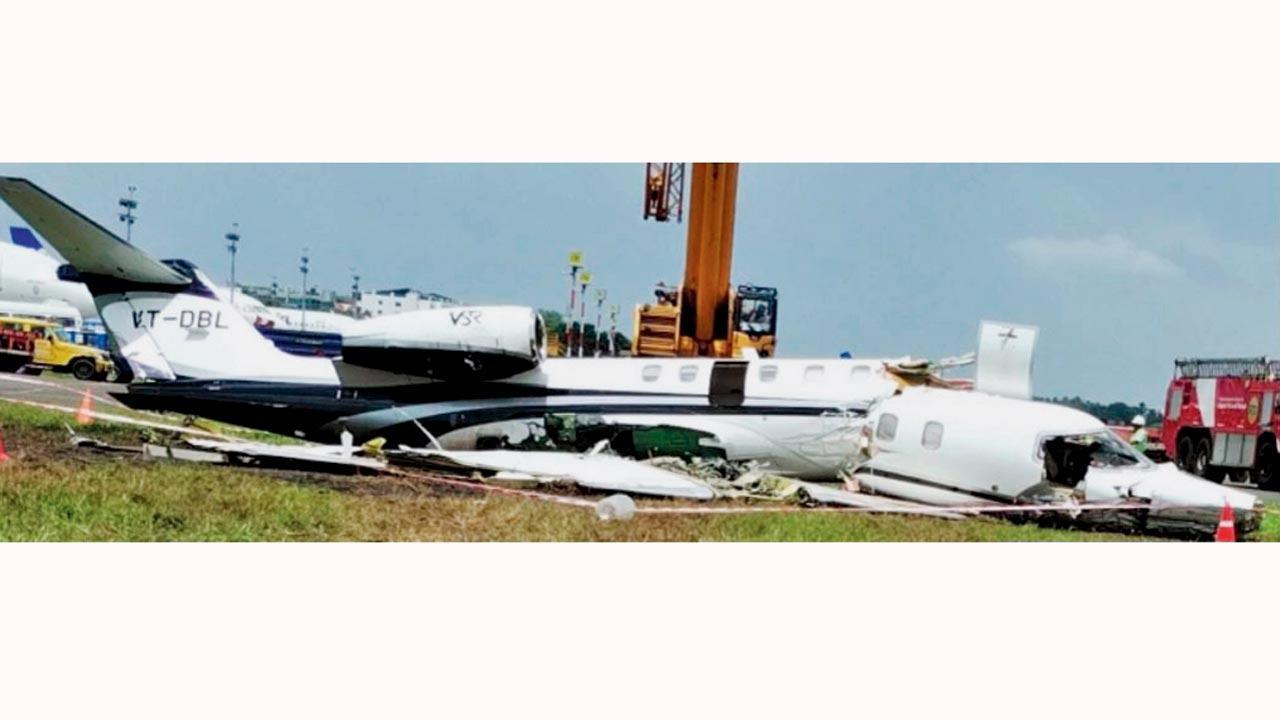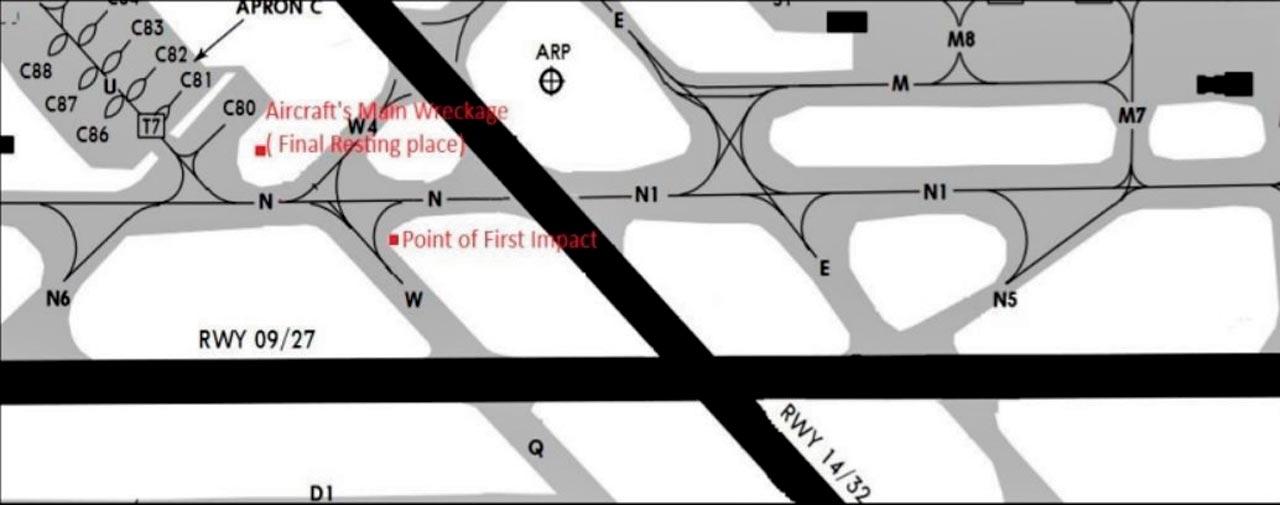Report says at the time of landing in Mumbai, Learjet 45XR flight from Visakhapatnam was faced with heavy rain and reduced visibility

The main wreckage of the Learjet 45XR
A report has shed light on the factors that caused a Learjet 45XR to crash at Mumbai airport on September 14, 2023. All passengers sustained superficial injuries in the mishap while the first officer was left paralysed in both legs.
ADVERTISEMENT
The Aircraft Accident Investigation Bureau (AAIB) has in its report stated that weather conditions made the aircraft, which was en route from Visakhapatnam to the city, drift towards Apron C. An apron refers to the area of an airport where aircraft are parked, unloaded or loaded, refuelled, boarded or maintained.
 The point of impact and the aircraft’s final resting position
The point of impact and the aircraft’s final resting position
A stick shaker aerodynamic stall warning was also triggered inside the cockpit moments before the crash.
According to the report, “The aircraft took off normally from Visakhapatnam and the flight en route was uneventful. The aircraft established contact with the Mumbai tower and was instructed to prepare for landing. The aircraft was cleared to land on Runway 27 and was given landing clearance at 113109 UTC (5.31.09 pm IST). At the time of landing, Mumbai airport was experiencing heavy rains and reduced visibility. The winds reported to the crew at the time of landing clearance was 140 DEGREES 7 KTS RWY27 (sic).”
Crosswind trouble
One of the investigators told mid-day, “The winds direction suggested that there were seven knots of crosswinds during the time landing clearance was granted.”
“At 113133 UTC (5.31.33 pm), the crew had the runway in sight and they decided to land on Runway 27. The aircraft continuously drifted right of Runway 27 and moved towards Apron C. About 40 seconds after the autopilot was disconnected, stick shaker alert sounded in the cockpit accompanied by a stall warning,” the report states.
The investigator added, “An aircraft’s wings stalls when the angle of attack (AOA), that is the angle between the wings and oncoming airflow, exceeds the critical angle, which is the angle at which the wing generates most lift. When the AOA is increased past the critical angle, the lift decreases and drag increases resulting in an aerodynamic stall.”
After the mention of stick shaker and stall warning, the report mentions, “Thereafter, Enhanced Ground Proximity Warning System (EGPWS) warnings were generated and the aircraft crash landed at the shoulder of the intersection of Taxiway W and N. As a result, the aircraft’s fuselage broke into two pieces and skidded, finally coming to a stop near the intersection of Taxiway U and N on an unpaved area near stand C80.”
Another investigator explained, “EGPWS are a type of terrain awareness warning system (TAWS) that alerts the pilots when their aircraft is in danger of collision with the ground or an obstacle. EGPWS uses a combination of sensors, databases and predictive algorithms to create a detailed map of the surrounding terrain and warn pilots of potential collisions.”
“Following the crash, a fire broke out and fire tenders rushed to the site and extinguished the fire. All occupants of the aircraft were evacuated, but they sustained various injuries due to the impact and were immediately admitted to the nearest hospital. Passengers and Pilot In Command (PIC) were discharged after precautionary treatment. The co-pilot received serious injuries and was admitted for a longer time,” the report states.
Complete destruction
The report also revealed, “The aircraft suffered complete destruction. Initially, it crash-landed on an unpaved area at the intersection of Taxiway W and N, causing the fuselage to fracture into two segments and skid, ultimately coming to a halt near an unpaved area close to the intersection of Taxiway U and N, near stand C80, Broken parts of the aircraft were scattered along its path (Taxiway N) toward the final stop. During an onsite inspection, it was observed that the nose section of the aircraft sustained damage. The wing separated, and the forward section of the fuselage broke away from the central fuselage. Both the nose landing gear and main landing gear were broken. However, the empennage and both engines remained attached to the fuselage. There were scorch marks beneath the right-hand side engine.”
According to the report, at the time of the crash, the pilot in command held an airline transport pilot licence (ATPL) with experience of approximately 6,100 flying hours of which approximately 540 hours were on this type [the type of jet which crashed]. The co-pilot held a commercial pilot licence (CPL) and had approximately 430 flying hours experience of which, 340 hours were on this type.
 Subscribe today by clicking the link and stay updated with the latest news!" Click here!
Subscribe today by clicking the link and stay updated with the latest news!" Click here!







